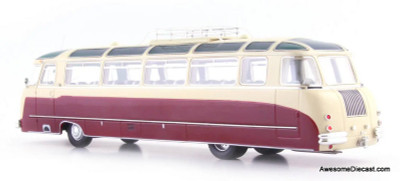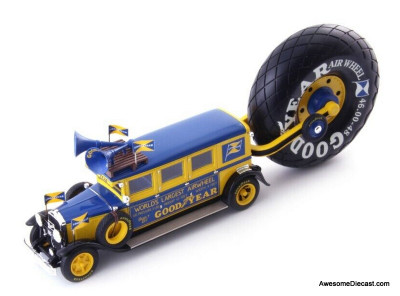This is a limited edition resin cast model with only 333 models distributed world wide
The model comes mounted on a base in an acrylic dispaly case
In the mid-1930s, it was also daring to clad buses in aerodynamically shaped sheet metal. Although this may have been practiced in passenger car construction in some cases, it remained the absolute exception for buses. The company ‘Gebr. Ludewig Karosseriefabrik’ must be credited with a pioneering role in this, even though the driving force behind the production of streamlined bus bodies was the DRG – the ‘Deutsche Reichsbahn Gesellschaft’.
Around 1935, the coachbuilder Gebr. Ludewig built at least four, probably even completely identical buses based on the 3-ton chassis of the Opel Blitz truck.
The Essen-based factory did not conceal the substructure they were relying on, because the name ‘Blitz’ was attached to the round radiator grille, which was almost abstract by the standards of the time, in chrome-plated letters.
Anyone at the Ludewig company who put the completely new and very independently shape sheet steel structure on paper on his drawing board has been lost in the course of history, as has the client for it. The only reliable information seems to be that four identical vehicles were dressed and provided with different lettering, whereby one bus with the lettering of the Deutsche Reichsbahn was used.
The clear eye-catcher of the buses were the two upright fins at the semi-circular rear. Charismatic for the aerodynamic zeppelins of the Ludewig brothers was the seating with swivel chairs at a 45° angle, so that the passengers on both sides could enjoy the passing landscape. Of course, this extravagant seating came at the expense of passenger capacity.
Unfortunately, according to current knowledge, none of the streamlined Ludewig road zeppelins have survived to this day.






















